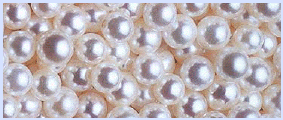 |
 Go
to Hand-Crafted
Pearl Wedding Jewelry Go
to Hand-Crafted
Pearl Wedding Jewelry |
| Go to
Wedding
Traditions, Customs, Superstitions and Symbols |
| Pearls -
The Queen Gem,
Love,
The Wedding Gem |
|
Purchasing Pearls |
|
Types of Pearl Necklaces |
|
Pearls and Skin Tones |
|
Pearl Books |
|
Pearl Care and Cleaning |
|
Freshwater Pearls |
| |
|
"The Queen Gem" |
| Pearls
always make a fashion statement - an essential for the
well-dressed woman. They are elegant, chic and
glamorous. Any woman can wear them for any
occasion. |
| Pearls are
Organic Gems. They are not man-produced ceramic.
They are not perfect. Pearls almost always have
dents, pits, grooves, circles etc. Luster is a
product of many layers of nacre overlapping in a varying
formation. No two pearls will ever be an exact
match - this is part of their uniqueness. |
| A pearl is
a gem produced by oysters in saltwater or by mollusk
(scallop) in freshwater. An irritant (ex: sand)
finds its way into the shell. The oyster can't rid
itself of it. To ease the discomfort, conchiolin
and nacre (calcium, also called
mother-of-pearl) are
secreted. The nacre is composed of microscopic
crystals. If this happens in nature (very rare),
it is know as a natural pearl. The result is the
build-up of layer after layer of nacre to form a pearl. |
|
Cultured pearls undergo the same process. They are
real pearls. Cultured pearls are formed
because the irritant is planted in the oyster to form
the pearls. Producers of cultured pearls wash,
feed, maintain water temperature and control pollutants;
but, the oyster still has control of the pearl product
it produces. It takes several years to raise the
oyster and produce a cultured pearl. Almost every
pearl on the market now is cultured, salt water and
freshwater pearls. Natural pearls are very rare. |
| Pearls are
the oldest known gem and for centuries were considered
to be the most valuable. A pearl is truly unique
because it is the only gem created by a living creature.
The oldest known natural pearl necklace is more than
4,000 years old. It was found in the sarcophagus
of a Persian princess who died in 520 BC. This
pearl is now displayed at the Louvre in Paris. |
| Records of
our fascination with pearls go back for thousands of
years. Their perfection (they need no cutting nor
polishing to reveal their beauty) and the fact they are
"born" has continued to amaze and delight us. The
shape and color of the pearl have linked it with the
moon, taking on the magic of serenity and romance.
Pearls will last a lifetime with
proper care and will become more beautiful with age. |
 The largest known pearl is called the Hope Pearl, once owned by Henry
Philip Hope - a London banker.
The largest known pearl is called the Hope Pearl, once owned by Henry
Philip Hope - a London banker.
The Hope Pearl is a white, drop-shaped blister pearl, measuring
approximately 2 x 4 inches, and ranging in color from greenish-gold on
one end to white on the other.
This pearl is now on display at the British Museum of Natural History. |
|
It is believed that Roman women took pearls to bed with
them to sweeten dreams. During the Classical Rome
era, only people of certain "status" were allowed to
wear pearls. |
| Long ago,
it was believed pearls were moonbeams with magical
powers that fell from heaven into the ocean and were
swallowed by oysters. |
| Gallant
knights wore pearls during the Dark Ages Crusades to
protect them from harm. During the Middle Ages,
pearls were the gift of choice for a Knight to give his
Lady. |
| The Roman
General Vitellius allegedly financed an entire military
campaign with just one of his mother's pearl earrings.
Queen Isabella (having hocked her impressive jewelry
collection to fund Christopher Columbus' expedition)
regained her investment from a discovery of pearls in
Central America that added to the wealth of Spain. |
| The Latin
word for pearl means "unique". The Romans used the
word "margaritae" (from the Greek word for pearl) to
indicate something cherished or of unusually high value.
That's why names Margaret, Margarita, Marguerite,
Marjorie, etc. in the Romance languages (Spanish, French
and Italian) mean "pearl" and are associated with
pearl-like qualities such as purity, spirituality,
virtue and chastity. |
| Chinese
use pearls in medicinal ways. In India, it is
believed that pearls give peace of mind and strength to
body and soul. Europeans believed swallowing
pearls whole would calm nerves. Incas, Aztecs and
North American Indians prize pearls for beauty and
mystical powers. |
| |
|
"Aphrodite's Tears of Joy", "Cleopatra's Love Potion" |
| Pearls are
strongly associated with LOVE. Pearls are linked
to Aphrodite, the Greek goddess of love and mother of
Eros (Cupid) and Venus, the Roman goddess of love.
Legend has it that in the first century AD, Cleopatra
crushed an expensive pearl at a banquet and drank it to
impress Marc Anthony. |
| Some other
names for pearls: "Luxury on Your Skin", "Dewdrops
of the Gods", "The Gem That Dims The Moon" |
| |
 "The Wedding Gem"
"The Wedding Gem" |
| Pearls are
associated with love, success, happiness, modesty,
chastity and purity. In ancient Greece, pearls
were believed to promote marital happiness and prevent a
newlywed woman from crying. The Greeks even call
pearls the "wedding gem". For these reasons,
pearls are a popular choice for brides on their wedding
day.
Pearl jewelry is an ideal wedding gift
(from a mother and father to their daughter on her wedding day, from
a groom to his new wife, from a bride to her attendants,
for the mother of the bride, etc.). The tradition
of pearls on your wedding day was started around 1000 BC
in Hindu culture. Pearls are still considered a
valued engagement/wedding gift. |
| Pearls are
great for other occasions, too! Pearls also make a
great Valentine's Day gift. Pearls are a perfect
gift for the graduate, the birthday girl, or for an
anniversary gift for your wife. |
| During the
14th, 15th and 16th centuries, everyone in the French
House of Burgundy royal wedding - even male guests -
wore pearl jewelry. In England, from Queen
Elizabeth I to today's Queen Elizabeth continues the
tradition of wearing pearls on their wedding day. |
| |
|
Look for the following when purchasing pearls: |
| Luster -
the reflection on the surface of a pearl. You do not
want it to look dull and chalky. |
| Surface -
no blemishes or pits. No pearl is completely
blemish-free, just look for fewer spots. |
| Color and
Size - personal preference |
| Shape -
traditional shape has always been round; however,
there are many more beautiful shapes |
| Do the
tooth test! Fake pearls are usually made from
ground fish scales and can be easily detected with the
simple tooth test. Gently scrape the pearls along
the ridges of your top teeth. If it glides easily,
it's fake. If you feel a slight gritty
abrasiveness, it's most likely cultured. |
| |
|
Types of pearl necklaces: |
 Pearl Collar Necklace, 12-13"
Pearl Collar Necklace, 12-13" |
| Collars
are usually made up of 3 (or more) pearl strands and fit
very snugly on the neck. This style looks great
with "V" or scooped necklines - very demure and
sophisticated. |
| |
 Pearl Choker Necklace, 14-16"
Pearl Choker Necklace, 14-16" |
| A choker
is the most classic of the single strand pearl
necklaces. It is simple and can go with just about
any outfit and neckline. A choker will enhance a
long neck. |
| |
 Pearl Princess Necklace, 17-19"
Pearl Princess Necklace, 17-19" |
| The
princess length is great for high necklines, low
plunging necklines and to hang a pendant from.
Longer necklaces will slenderize and elongate the neck. |
| |
 Pearl Matinee Necklace, 20-24"
Pearl Matinee Necklace, 20-24" |
| The
matinee is somewhere in between the princess and the
opera lengths. This is a perfect length for
casual, business and evening dress. A matinee
necklace should fall to the top of the cleavage. |
| |
 Pearl Opera Necklace, 28-34"
Pearl Opera Necklace, 28-34" |
| The opera
pearl strand is refined and perfect for high necklines
as a single strand. An opera-length necklace
should reach the bottom of the breast bone. You
may also double an opera strand for a 2-strand choker. |
| |
 Pearl Rope Necklace, more than 45"
Pearl Rope Necklace, more than 45" |
 Coco Chanel introduced us to the sexy rope length.
Rope pearl strands usually have "mystery clasps" that
allow you to break this single strand necklace into many
different necklace and bracelet combinations, a complete
pearl wardrobe.
Coco Chanel introduced us to the sexy rope length.
Rope pearl strands usually have "mystery clasps" that
allow you to break this single strand necklace into many
different necklace and bracelet combinations, a complete
pearl wardrobe. |
| |
|
Skin Tones and Pearl Overtones: |
| You may
have heard in the past that certain skin tones should
look for rose, cream, gold or silver overtones when
buying white pearls. Actually, pearls absorb
surrounding colors because they are reflective.
Honestly, once the pearls are around your neck, the
overtones of the pearls is very subtle. Just
remember, buy what you like! |
| |
|
Pearl Care and Cleaning: |
| Pearls are
very soft and need special care. Wear your pearls
often to keep them from drying out. |
| After
wearing your pearls, wipe them gently with a damp soft
cloth to remove perspiration and skin oils. You
may even use a drop of olive oil on the cloth to help
maintain the pearl luster. Pearls also absorb
acids in our skin that will slowly eat away at the
pearls. There are commercial products available
today specifically designed to clean pearls or have them
professionally cleaned by a reputable jeweler. |
| Do not use
hot water, a steamer or an ultrasonic cleaner. Do
not soak in water. |
| Store your
pearls separately (preferably wrapped in a soft cloth)
from other jewelry. Do not store pearls in a
plastic bag, this will trap moisture. Make sure
pearls are dry before storing them. Lay them flat
so the silk string sill not stretch. Do not hang
your pearls. |
| Do not
expose your pearls to cosmetics, chemicals, perfumes and
hairsprays. Put your pearls on
AFTER your beauty routine. Pearls are very
porous and will soak up just about any substance they
come in contact with. Never expose pearls to dish
or wash detergents. |
| Do not
wear your pearls in swimming pools with chlorinated
water and do not wear your pearls with sun block/tan
products. |
| Long
periods of exposure to direct sunlight, halogen lights,
or other very bright lights can fade pearl colors. |
| |
|
Pearl Processing Practices: |
| Pearls are
often polished by hand or tumbled with cork powder to
bring up the luster. |
| Some white
pearls are bleached using mild bleach and bright
fluorescent lights. |
| Most dark
shades of pearls (ex: Peacock) are the result of
irradiation. This process involves immersing the
pearls in the desired dye color and heating them in a
type of micro-wave oven. The resulting color is
permanently bonded to the outer layers of the pearl. |
| |
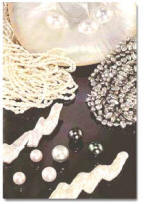 About
Freshwater Pearls: About
Freshwater Pearls: |
 Freshwater Pearls are grown (farmed) in freshwater lakes
and rivers where mussels simultaneously produce many
pearls. Each mollusk can yield up to a 30 pearl
harvest! This is why they are less expensive than
saltwater pearls. Freshwater pearls are all pearl (all
nacre) and the proper name is Cultured Freshwater
Pearls.
Freshwater Pearls are grown (farmed) in freshwater lakes
and rivers where mussels simultaneously produce many
pearls. Each mollusk can yield up to a 30 pearl
harvest! This is why they are less expensive than
saltwater pearls. Freshwater pearls are all pearl (all
nacre) and the proper name is Cultured Freshwater
Pearls. |
 The irritants used in making freshwater pearls are often
smaller than those used in saltwater pearls, which
results in a pearl with more nacre, or pearl, and less
core irritant. Most Cultured Freshwater Pearls
today have a
mother of pearl
nucleus: 95% to 98% of these pearls are composed
only of nacre.
The irritants used in making freshwater pearls are often
smaller than those used in saltwater pearls, which
results in a pearl with more nacre, or pearl, and less
core irritant. Most Cultured Freshwater Pearls
today have a
mother of pearl
nucleus: 95% to 98% of these pearls are composed
only of nacre.
For seeding , the oyster is gently opened. Tiny
slits are cut into its Mantle (flesh) and small pieces
of living tissue from a donor oyster are then carefully
inserted into the slits. Depending on the age and
size of the oyster, between 20 to 60 pieces of tissue
are used to seed it. Soon after seeding, pearl
sacs begin to form around the soft irritants. The
mantle tissue eventually dissolves away and pearls grow
in its place. |
 After harvesting, the oysters can be seeded again and put back in the
water to produce again.
After harvesting, the oysters can be seeded again and put back in the
water to produce again. |
| Cultured
freshwater pearls come in a beautiful range of un-dyed
(natural) colors: cream (natural creamy
off-white), peach/pink, gray, black, lavender, and
white. The oystered pearls are nursed for two or
three more years after the insertion of the mantle
tissue into the oyster. During the cultivation
period, the oysters receive constant attention and care
to help assure they will thrive and produce the best
possible pearl crop; but, there are no guarantees.
The culturing process is very delicate and fragile, and
after all of the effort, the pearl farmers have little
control over the final result. Each individual
oyster determines the quality of the pearl - its luster,
shape, color, surface smoothness and so on.
Despite the best efforts of pearl farmers, it is really
the oyster and nature that determine whether or not
there will be a pearl at all, and if so, whether or not
it will be beautiful and valuable. |
| We are
used to seeing freshwater pearls as long, narrow
rice-shaped pearls with a "wrinkle" surface. There are
more rounded shapes and a wide range of colors available
(much more variety than saltwater pearls). The
species of mussel, water and pearl position in the shell
determine the pearl color. The shape of the
nucleus determines the pearl shape. The amount of
pollution in the water determines the size of the pearl.
For interest in your next jewelry piece, opt for a more
non-rounded shaped freshwater pearl shape - such as
baroque, coin, pear, drop, button, nugget, etc.
The quality of freshwater pearls is determined by
luster, smoothness, size and shape. Look for
freshwater pearls to be matched as closely as possible
in shape, size and color. |
| Cultured
Freshwater Pearls come in a variety of shapes such as
baroque, potato (off-round), round, oval, button, flat
coin, teardrop, keshi (rice-crispy), or stick. The
round pearl is the most popular and the most expensive -
only about 2% of the entire freshwater pearl crop is
round. |
| Native
Americans of the Atlantic Coastal areas and the
Mississippi River basin were the first to collect and
use US freshwater mussel pearls. Pearl pendants
and ear pendants were worn by both men and women.
Pearl shell was used to decorate clothing, make armlets,
pendants and gambling pieces. Powhattan (the
father of Pocahontas) had a large stash of pearls he
received as tributes. |
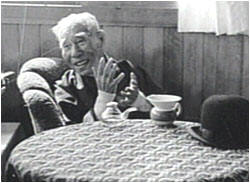 Kokichi Mikimoto (1858-1954) stands out as the most recognized
contributor to the modern cultured pearl. His marketing techniques
and business savvy made him a household name, and to this day people
associate Mikimoto with fine pearls. He is still considered to be
The Pearl King and the Father of Periculture.
Kokichi Mikimoto (1858-1954) stands out as the most recognized
contributor to the modern cultured pearl. His marketing techniques
and business savvy made him a household name, and to this day people
associate Mikimoto with fine pearls. He is still considered to be
The Pearl King and the Father of Periculture. |
| |
|
Here are some great books about pearls from my
personal collection: |
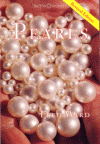
|
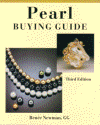
|

|
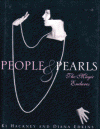
|

|

|
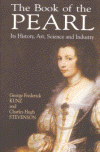
|
| |
|
More information about Pearls |
|
More information about
Pearls |
|
Information about Freshwater Pearls in the US |
| |
 Our hand-crafted
sterling silver freshwater pearl jewelry comes with a pearl
information card. This card assures the recipient they are
receiving genuine pearl items.
Our hand-crafted
sterling silver freshwater pearl jewelry comes with a pearl
information card. This card assures the recipient they are
receiving genuine pearl items. |
| |
|
Contact Us |




 "The Wedding Gem"
"The Wedding Gem"










 Kokichi Mikimoto (1858-1954) stands out as the most recognized
contributor to the modern cultured pearl. His marketing techniques
and business savvy made him a household name, and to this day people
associate Mikimoto with fine pearls. He is still considered to be
The Pearl King and the Father of Periculture.
Kokichi Mikimoto (1858-1954) stands out as the most recognized
contributor to the modern cultured pearl. His marketing techniques
and business savvy made him a household name, and to this day people
associate Mikimoto with fine pearls. He is still considered to be
The Pearl King and the Father of Periculture.






